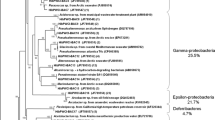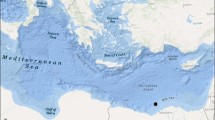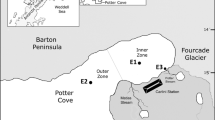Abstract
The Hibernia production platform is the largest oil producing platform off the east coast of Canada. The produced water is the major source of contamination from the platform into the ocean. A comprehensive study on the potential impact of the produced water discharge is needed. Microorganisms can rapidly respond to change, whether negative or positive, and at the population level, are powerful indicators of change in their environment. The objective of this study was to characterize the indigenous microbial community structure, by denaturing gradient gel electrophoresis (DGGE), in the produced water and in seawater around the production platform, and to determine whether the release of produced water is impacting the natural ecosystem. The DGGE results showed that the production water did not have a detectable effect on the bacterial populations in the surrounding water. Cluster analysis showed a >90% similarity for all near surface water (2 m) samples, ~86% similarity for all the 50 m and near bottom (NB) samples, and ~78% similarity for the whole water column from top to bottom across a 50 km range, based on two consecutive yearly sampling events. However, there were distinct differences in the composition of the bacterial communities in the produced water compared to seawater near the production platform (~50% similar), indicating that the effect from produced water may be restricted to the region immediately adjacent to the platform. Specific microorganisms (Thermoanaerobacter for eubacteria and Thermococcus and Archaeoglobus for archaea) were detected as significant components of the produced water. These particular signature microorganisms may be useful as markers to monitor the dispersion of produced water into the surrounding ocean.
Access this chapter
Tax calculation will be finalised at checkout
Purchases are for personal use only
Similar content being viewed by others
References
Abrahamson A, Brandt I, Brunström B, Sundt R, Jørgensen E (2008) Monitoring contaminants from oil production at sea by measuring gill EROD activity in Atlantic cod (Gadus morhua). Environ Pollut 153:169–175
Casamayor E, Massana R, Benlloch S, Øvreås L et al (2002) Changes in archaeal, bacterial and eukaryal assemblages along a salinity gradient by comparison of genetic fingerprinting methods in a multipond solar saltern. Environ Microbiol 4:338–348
Dice L (1945) Measures of the amount of ecologic association between species. Ecology 26: 297–302
Fortin N, Fulthorpe R, Allen D, Greer C (1998) Molecular analysis of bacterial isolates and total community DNA from kraft pulp mill effluent treatment systems. Can J Microbiol 44:537–546
Hylland K, Tollefsen K, Ruus A et al (2008) Water column monitoring near oil installations in the North Sea 2001–2004. Mar Pollut Bull 56:414–429
Muyzer G, De Waal E, Uitterlinden A (1993) Profiling of complex microbial populations by denaturing gradient gel electrophoresis analysis of polymerase chain reaction-amplified genes coding for 16S rRNA. Appl Environ Microbiol 59:695–700
Sheffield V, Cox D, Lerman L, Myers R (1989) Attachment of a 40-base-pair G + C-rich sequence (GC-clamp) to genomic DNA fragments by the polymerase chain reaction results in improved detection of single-base changes. Proc Natl Acad Sci USA 86:232–236
Acknowledgments
The authors thank Susan Cobanli, Nathalie Fortin, Sylvie Sanschagrin, and Marc Auffret for their excellent technical assistance. This research was supported by Fisheries and Oceans Canada and the National Research Council of Canada.
Author information
Authors and Affiliations
Corresponding author
Editor information
Editors and Affiliations
Rights and permissions
Copyright information
© 2011 Springer Science+Business Media, LLC
About this chapter
Cite this chapter
Yeung, C.W., Lee, K., Greer, C.W. (2011). Microbial Community Characterization of Produced Water from the Hibernia Oil Production Platform. In: Lee, K., Neff, J. (eds) Produced Water. Springer, New York, NY. https://doi.org/10.1007/978-1-4614-0046-2_18
Download citation
DOI: https://doi.org/10.1007/978-1-4614-0046-2_18
Published:
Publisher Name: Springer, New York, NY
Print ISBN: 978-1-4614-0045-5
Online ISBN: 978-1-4614-0046-2
eBook Packages: Earth and Environmental ScienceEarth and Environmental Science (R0)




